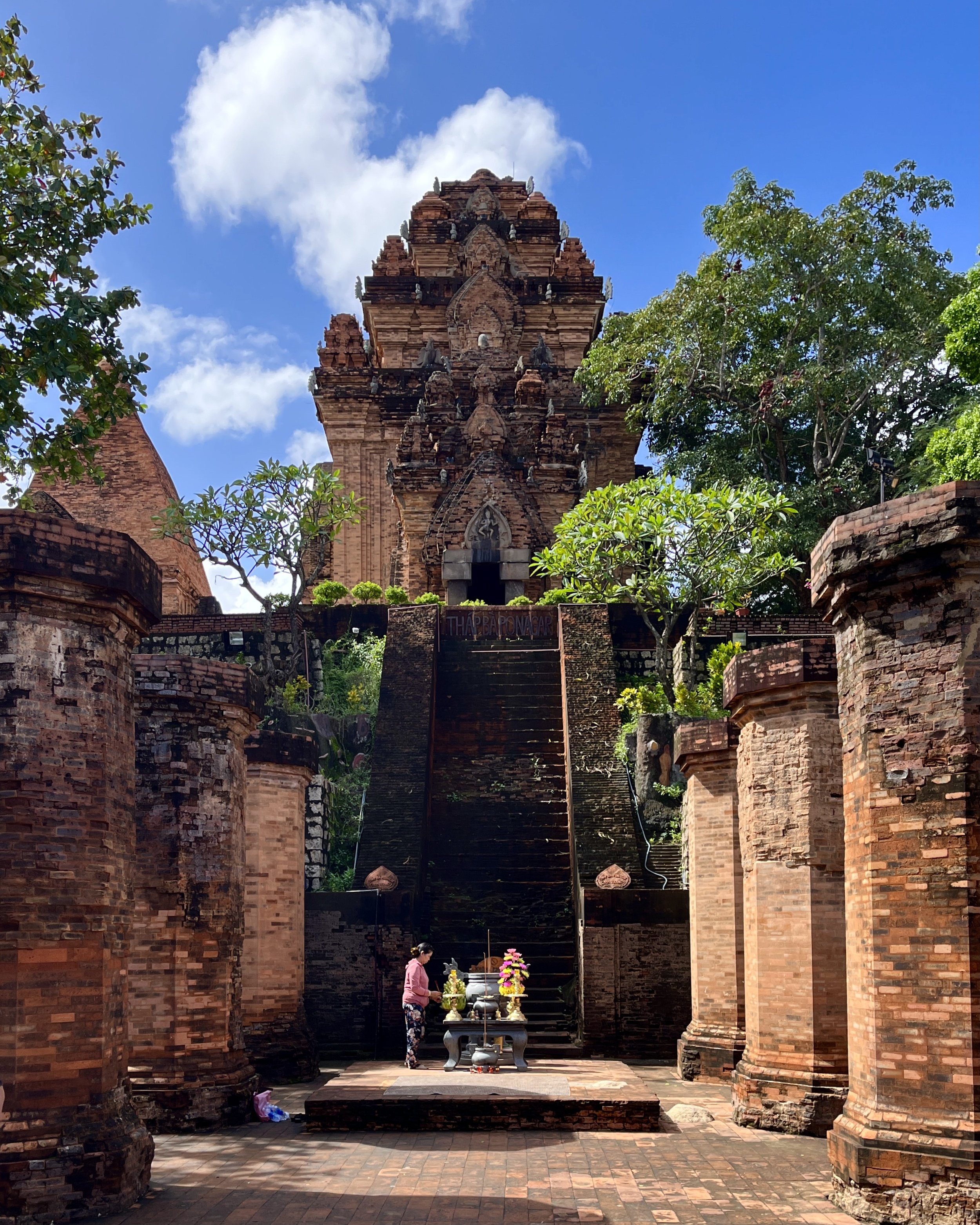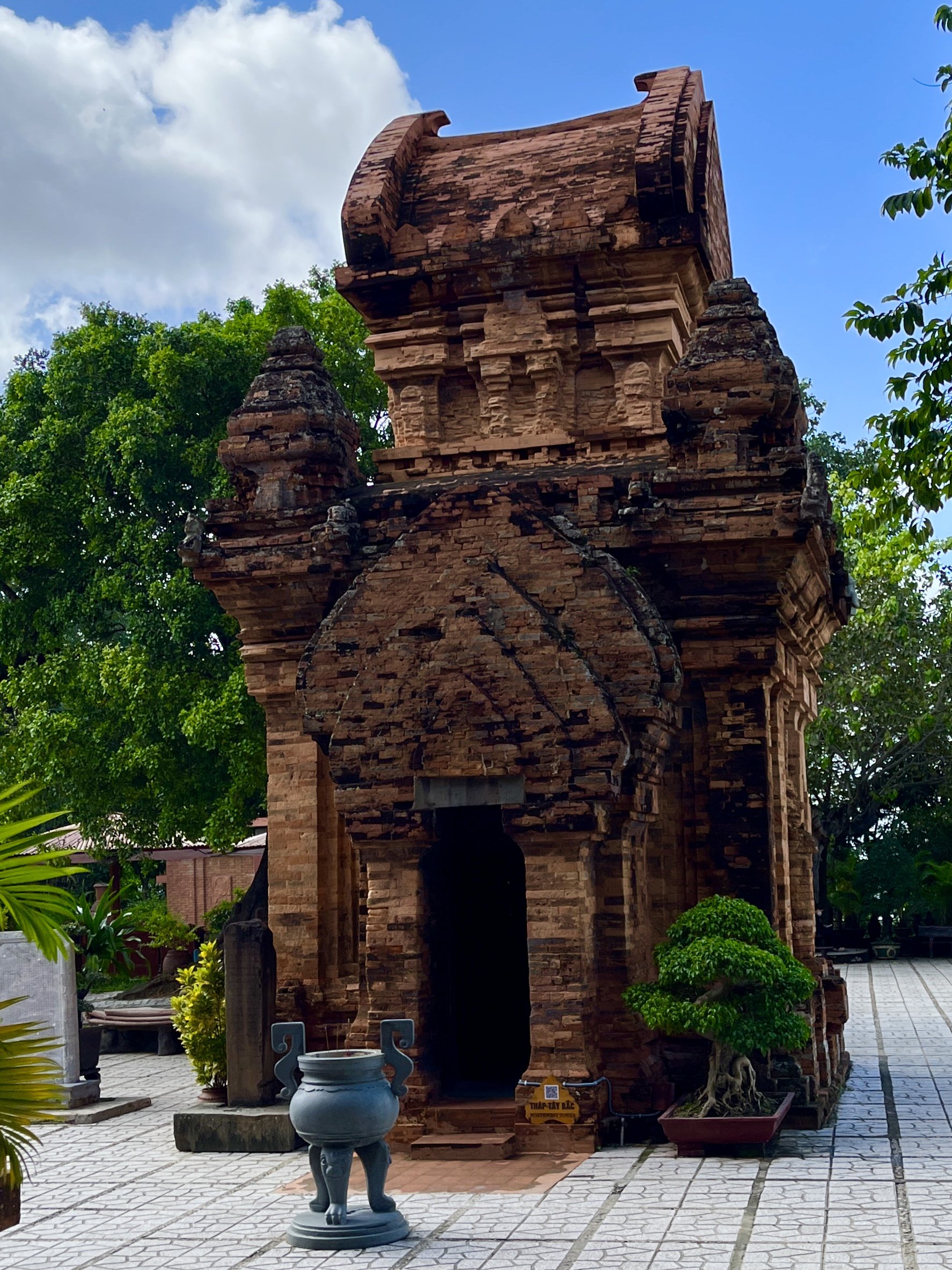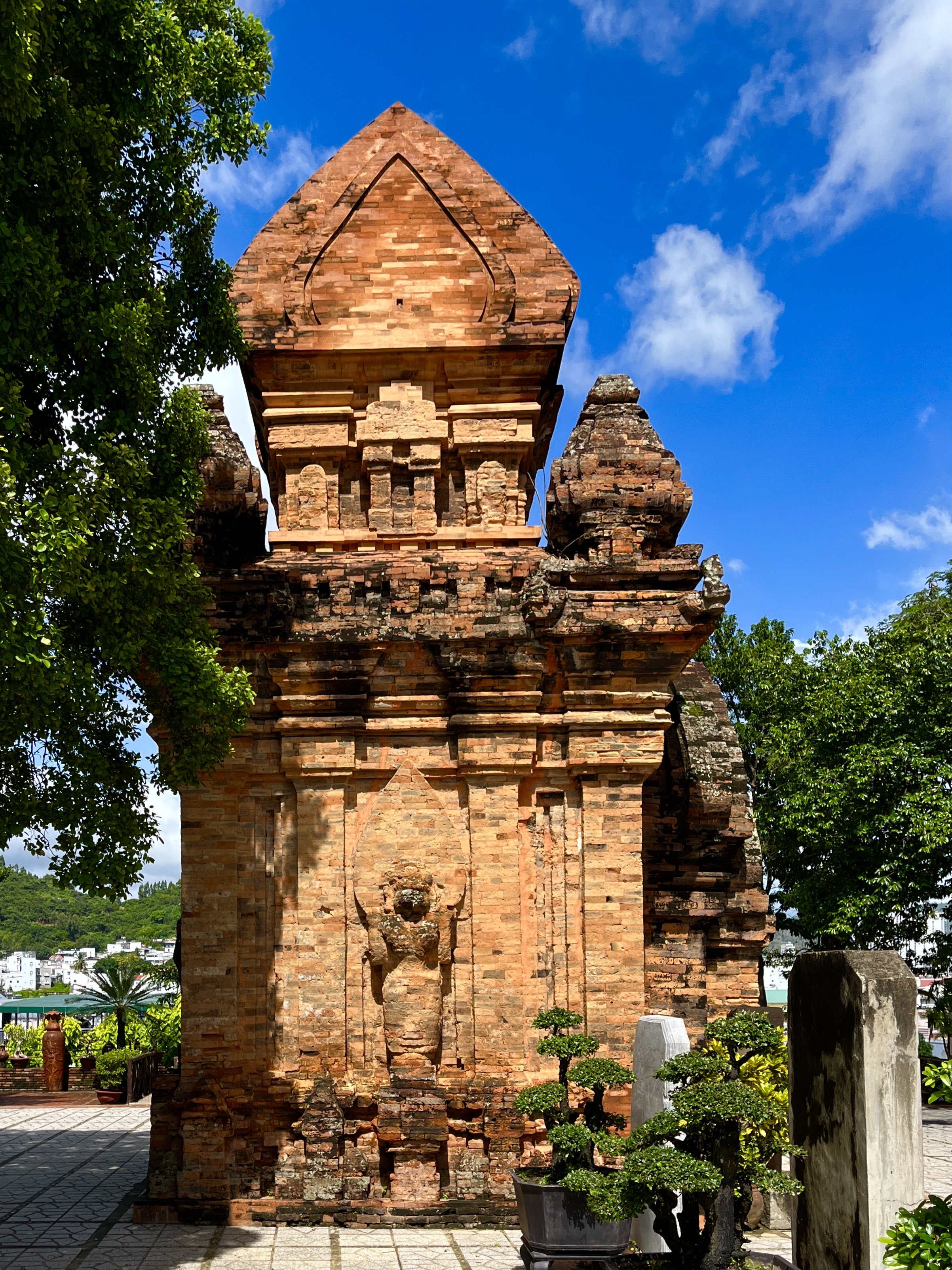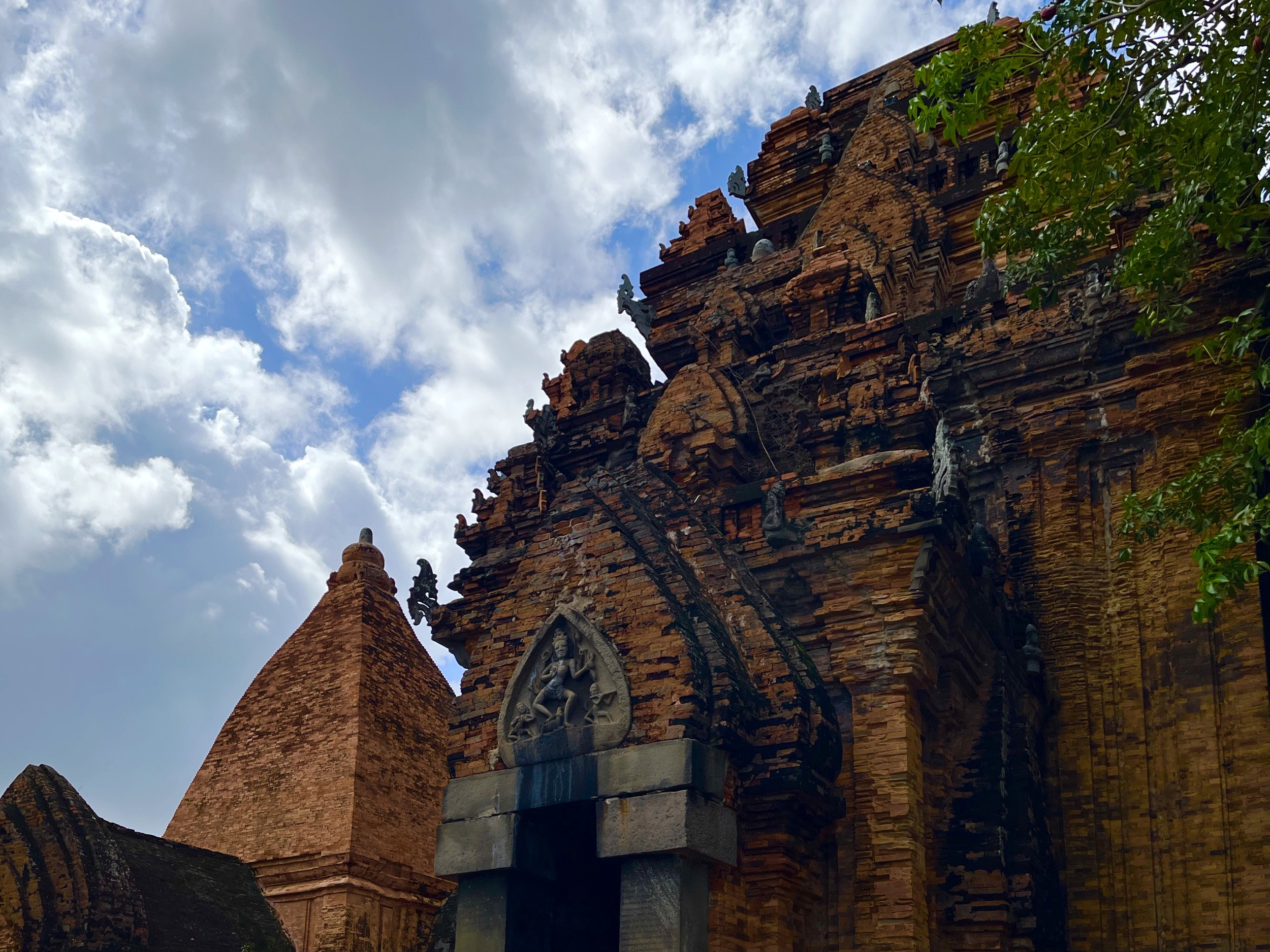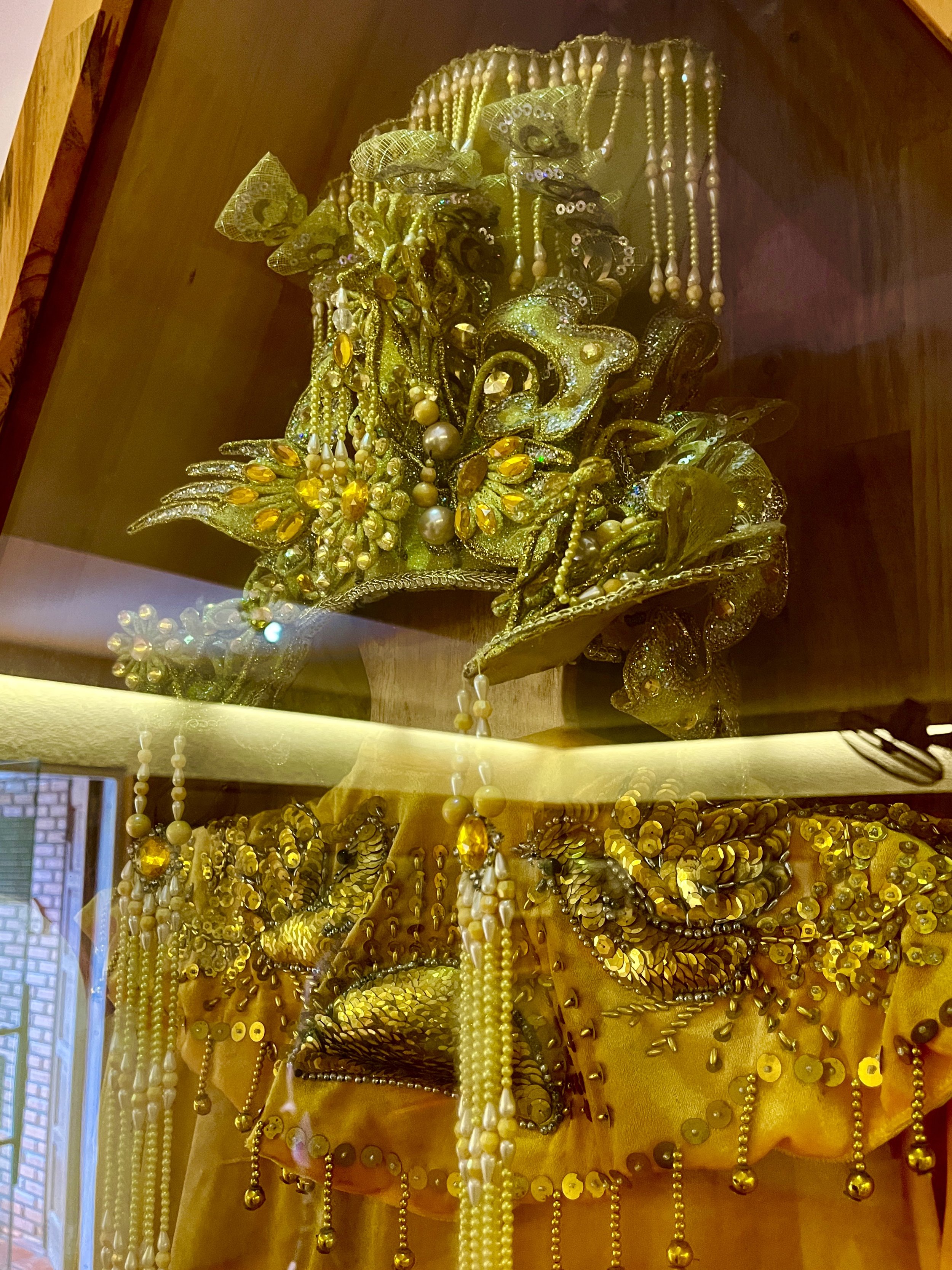The earliest stele discovered on the site of the Po Nagar Cham towers is dated 784, and references a mukhalinga decorated with jewelry and resembling an angel's head being carried off by Javanese pirates, “men living on food more horrible than cadavers, frightful, completely black and gaunt, dreadful and evil as death." It indicates that once the Cham King Satyavarman regained power in the area of "Ha-Ra Bridge", he restored the temple, but the jewels were never recovered or replaced.
Originally a Hindu place of worship, with each of four towers dedicated to a different god, today the temple is dedicated to Yan Po Nagar, the goddess of the country, who came to be identified with the Hindu goddesses Bhagavati and Mahishasuramardini, and who in Vietnamese is called Thiên Y Thánh Mẫu. Local Buddhists do pray here, but it’s mostly crowded at 25 minute intervals by Chinese and Korean tourists arriving on tour buses. For this reason, although the place is so small it would be difficult to spend more than 20 minutes there, there’s a security guard installed at the main tower to block anyone not part of the tour groups from entering for 10 to 15 minutes at a time. Don’t worry though; there’s nothing of interest inside.
Ongoing wars between the Cham and Khmer in the 9th through 12th centuries saw gold and stone statues and lingas offered and stolen over and over; no original artifacts remain here. The one room “museum” houses some low quality educational examples only. The towers were used continuously until the Vietnamese vanquished the Cham in the 17th century, becoming increasingly used by Buddhists as the Cham converted. The main sculptures, however, are Hindu, depicting the Hindu goddess Mahishasuramardini or Durga, the slayer of the buffalo-demon, and dating from the 10th and 11th centuries.
This site is not a must-see if you’ve visited other Cham temples. It is very convenient though: on the north side of Nha Trang, it’s at most a $5 grab ride from anywhere, and the admission ticket is less than $2.
